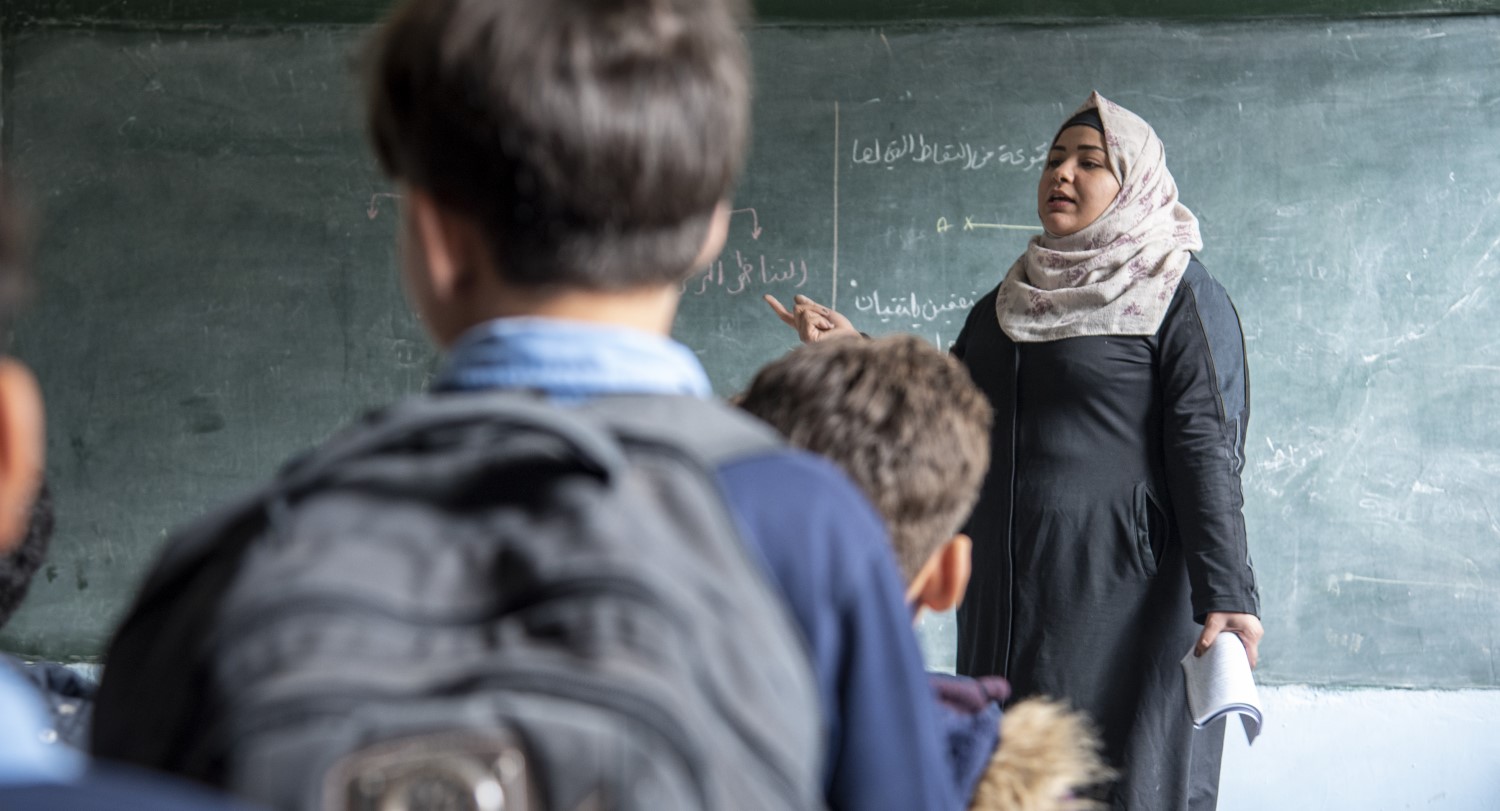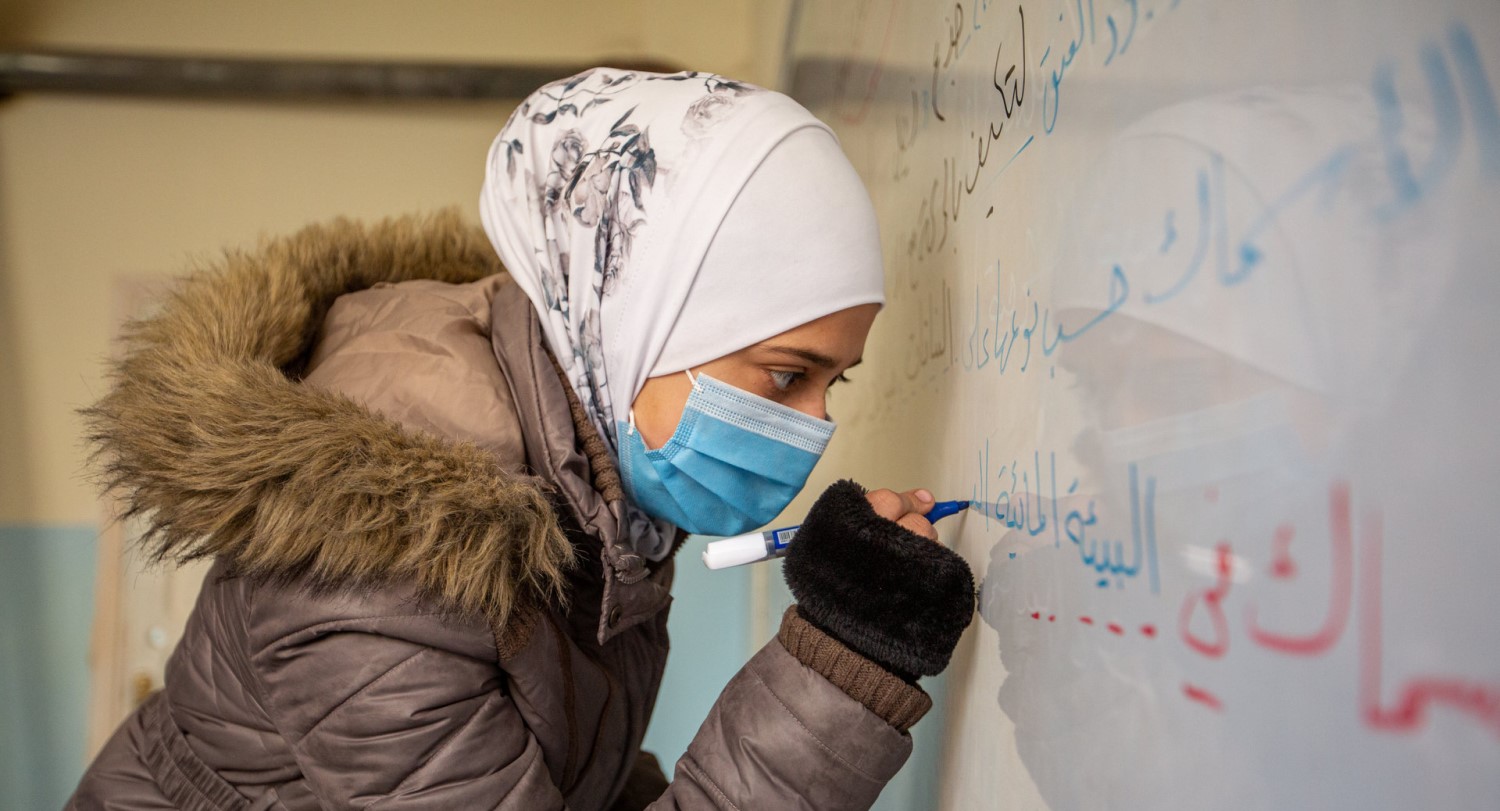Ten years of war have passed, and Syria’s humanitarian disaster deepens
War-torn Syria has descended into a financial crisis that worsens the country’s humanitarian situation. Children living through the war need moments in which they can just be children.
“How can I ever repay my country? I have been told that it is too tough for someone my age to ask, but I am growing up in this country. I eat the food that my father, a farmer, has planted in this soil. That teaches me what is happening here. I want to do something for my country when I can.”
These are the words of a Syrian eight-grader from Eastern Ghouta, Ghadeer Al Aghawa, who we interviewed in January.
I was horrified when I read the interview. Does a child really have to be burdened by such thoughts? Her reflections underscore the grim reality: a disaster marks an end to childhood.
Syria has been through a tumultuous decade since the war started in 2011. The intricate conflict involves the government, opposition groups, other countries supporting the various parties, and extremist groups, and the turmoil has a staggering impact on the emerging generation.
The country hosts millions of students who have gone to school in exceptional circumstances.
At least five million children have been born in Syria during the war. An additional million were born as refugees in Syria’s neighbouring countries. According to UNICEF data, thousands of children have been injured, and every ten hours, a Syrian child dies because of the war.
There are no signs of relief as Syria enters another decade in challenging circumstances.
The country faces an unprecedented economic collapse, worse than anything witnessed during the war thus far, writes The New York Times. The currency is weak, salaries have decreased, and the prices of necessities have soared. Syrians suffer from a chronic lack of petrol, which they need for cooking and heating the buildings where many families live.
Marwa Omar Safaya teaches computer science at an FCA supported school in Eastern Ghouta and observes first-hand how the country’s situation affects the children.
“During severely cold winter days, I notice how the children’s hands turn blue. Nothing protects their small bodies from the cold; the price of a coat nowadays equals a month’s salary,” she says.

Teacher Marwa Omar Safaya has seen the war’s impact on children.
The reasons behind the economic collapse are manifold, and many of them are interrelated, such as widespread destruction, international sanctions and the collapse of Lebanon’s banking system.
Statistics by UNOCHA underscore the situation’s severity. The number of people in need has increased by 20 per cent compared to the same period last year. Of Syria’s 18 million people, over 13 million need humanitarian assistance, and six million need it urgently. The World Food Programme (WFP) warned in February that a record number of 60 per cent of the population suffers from a lack of food.
Amid these needs, it is challenging to reconstruct cities ruined by a decade of war. The coronavirus pandemic and the measures curbing it further complicates daily life.
During the first lockdowns, experts worldwide expressed their concerns on how closing schools might affect learning globally. UNICEF and the World Bank said that already a few months of school closure might scar a generation, and worst-case predictions fear entire “lost generations”.
In Syria, the pandemic is only the tip of the iceberg. The country hosts millions of students who have gone to school in exceptional circumstances. Teacher Marwa Omar Safaya feels the pain of her students.
“We try to convince them that life has a lot to offer and that miracles happen when you go to school and work hard. At the end of the day, they only think of how they can complete their mandatory studies to find work and earn food to their table,” Marwa describes.

Eight-grader Ghadeer Al Aghawan is disappointed by the lack of computers in her school.
Eight-grader Ghadeer Al Aghawan says she is grateful for all that has been done for her school during the past years, but some things still disappoint her.
“We have IT classes but only theory. We do not have any equipment to practice what we learn, and that is sometimes frustrating. I know that outside our small town, the rest of the world is dependent on computers and technology. I feel like I am falling behind.”
Ghadeer’s disappointment is understandable. The digital divide between different societies is deep, and the divide increases inequality.
Finnish schools, for instance, utilised the internet for learning already when I was at Ghadeer’s age in 2007, and students did school assignments on computers. In Syria, this chance does not exist for most people, even today. It would not even be possible to introduce digital systems amid war. Computers require connections, connections rely on infrastructure, and infrastructure is built with money.
One thing is obvious: the schools play an essential part in disasters like the war in Syria. The schools offer a safe space and room to breathe for children enduring challenging circumstances. Ghadeer has found solace in school.
“For now, I only try to do my best at school”, Ghadeer says.
She has faith in a better future.
“Even after all the fighting, good things have happened, and I’m waiting for the good things that are still to happen.”
Children living through war need to experience moments in which they feel like children. And schools are the best place for that.
Ulriikka Myöhänen
The author works as Communications Specialist for the Middle East at FCA. FCA supports access to quality education for internally displaced people in Syria.
